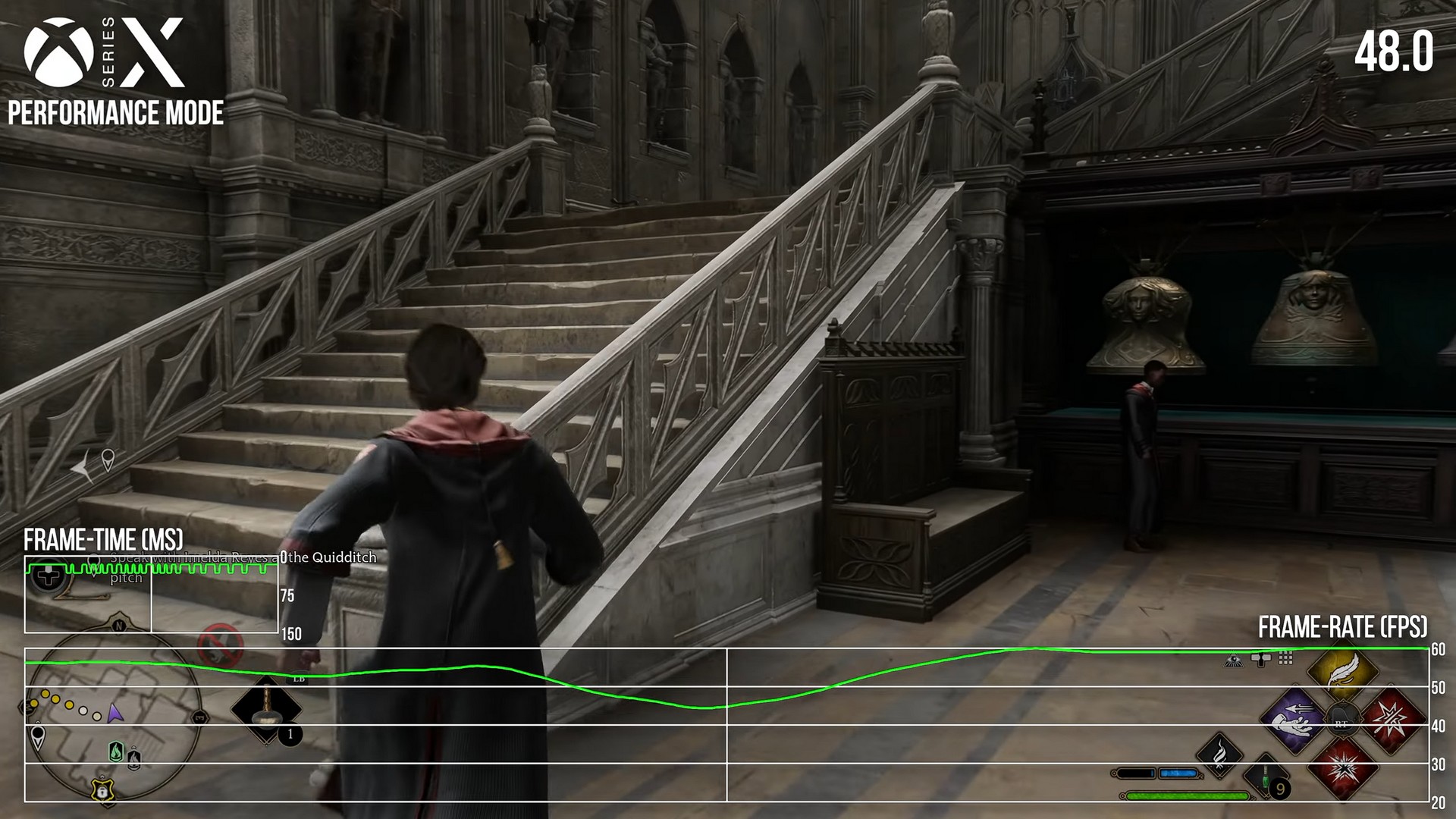Hogwarts Legacy is a huge success. Avalanche Software’s game is particularly notable for its artistic direction and huge open world to explore, and there are many ways to enjoy it. Digital Foundry today delivers its full analysis of the different versions of the game and describes the graphics modes available.
Up to 5 graphic modes available!

The least we can say is that the studio has thought of all gamers. In fact, Hogwarts Legacy offers no less than 5 different graphics modes that will allow everyone to get the most out of their console and television. If your device is connected to a 60Hz TV that isn’t HDMI 2.1 compliant, you’ll only be able to enjoy Fidelity, Ray-Traced Fidelity, and Performance modes.
In fidelity mode the game runs in 1728p at 30fps, while in fidelity mode with ray tracing it runs in 1440p. While Fidelity mode offers a reasonably stable 30 FPS, this is not the case for Ray Tracing mode, which Digital Foundry does not consider highly recommended at the moment.
The performance mode also runs in 1440p, but with slightly lower graphics options than the fidelity mode, such as the vegetation density. The game runs at 60 FPS here, but the framerate is quite unstable on the Xbox Series X version. According to Digital Foundry, the stuttering persists even if your TV is VRR compatible.
2 additional modes on HDMI 2.1 TVs
If your console is connected to an HDMI 2.1 TV compatible with VRR and 120Hz, you can enjoy 2 additional in-game modes: Balanced mode is similar to Fidelity mode but offers a frame rate of 40 FPS. So you can enjoy a slightly smoother and more responsive game.
The high framerate mode allows you to play at a framerate of over 60 FPS, but with a resolution of 1080p. In this mode, the game generally runs between 60 and 90 FPS.
It should also be noted that the game uses dynamic resolution in all modes and the final rendering is upscaled thanks to FSR 1.
Better performance on PS5

Comparing the Xbox Series X and PS5 versions, Digital Foundry concludes that Hogwarts Legacy generally runs better on PS5 than Microsoft’s console. The frame rate in Performance, Fidelity and Balanced modes is more stable there, while the high frame rate mode is identical on both supports.
The experts also point out that the graphics quality of the different modes is also identical.
Also note that on these two machines it’s also possible to disable the framerate limit, but that’s not necessarily beneficial. According to Digital Foundry we often do not get more than 5 FPS in the different modes and obviously a VRR compatible screen is strongly recommended to play in these conditions.
No ray tracing on Xbox Series S

As is so often the case, the Xbox Series S does not offer a ray tracing mode. On Microsoft’s small console there are only performance, fidelity and balanced modes. The game runs at 792p in performance mode and 1080p in the other two modes.
As with the Xbox Series X, the framerate is very unstable in Performance mode, while Fidelity mode offers a much more comfortable 30 FPS. Digital Foundry also states that this is the best mode to play Hogwarts Legacy on Xbox Series S.
Overall, Richard Leadbetter concludes that while the PS5 is generally a decent performer, the Xbox versions are “taking some serious work” from the studio at this time. Digital Foundry also wonders about the state of the Xbox One, PS4 and Nintendo Switch versions, given the title’s ambitions and its difficulties in running correctly on “next-gen” consoles.
Remember, Hogwarts Legacy is out now for Xbox Series X | S and PS5 is available and is expected for April 4th on Xbox One and PS4. The Nintendo Switch version is scheduled for release on July 25, 2023.

